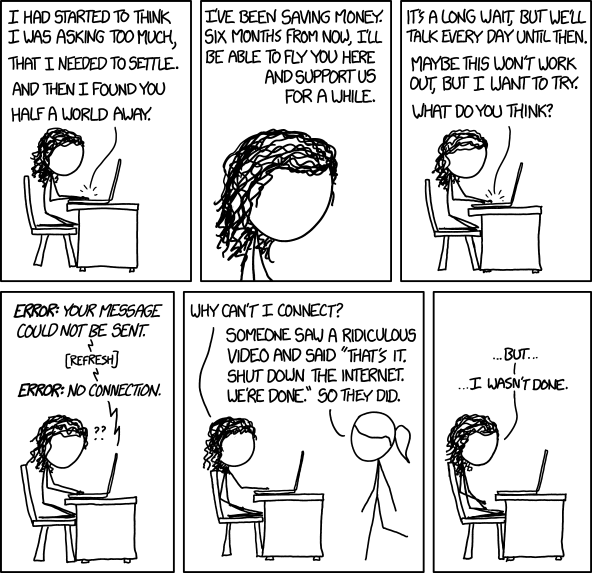
Feds want Apple’s help to defeat encrypted phones, new legal case shows | Ars Technica
Link
Wanderers – a short film by Erik Wernquist from Erik Wernquist on Vimeo.
For more information and stills gallery, please turn to: erikwernquist.com/wanderers
(Just in case my website runs slow, here is a link to an imgur album version of the gallery: imgur.com/a/Ur5dP)Wanderers is a vision of humanity’s expansion into the Solar System, based on scientific ideas and concepts of what our future in space might look like, if it ever happens. The locations depicted in the film are digital recreations of actual places in the Solar System, built from real photos and map data where available.
Without any apparent story, other than what you may fill in by yourself, the idea of the film is primarily to show a glimpse of the fantastic and beautiful nature that surrounds us on our neighboring worlds – and above all, how it might appear to us if we were there.CREDITS:
VISUALS – Erik Wernquist – erik@erikwernquist.com
MUSIC – Cristian Sandquist – cristiansandquist@mac.com
WORDS AND VOICE – Carl Sagan
COLOR GRADE – Caj Müller/Beckholmen Film – caj@beckholmenfilm.se
LIVE ACTION PHOTOGRAPHY – Mikael Hall/Vidiotism – mikael@vidiotism.com
LIVE ACTION PERFORMANCE – Anna Nerman, Camilla Hammarström, Hanna Mellin
VOCALIST – Nina Fylkegård
THANK YOU – Johan Persson, Calle Herdenberg, Micke Lindgren, Satrio J. Studt, Tomas Axelsson, Christian Lundqvist, Micke Lindell, Sigfrid Söderberg, Fredrik Strage, Johan Antoni, Henrik Johansson, Michael Uvnäs, Hanna MellinTHIS FILM WAS MADE WITH USE OF PHOTOS AND TEXTURES FROM:
NASA/JPL, NASA/Goddard Space Flight Center Scientific Visualization Studio, ESA, John Van Vliet, Björn Jonsson (and many others, of which I unfortunately do not know the names)
Image

DHS Set to Destroy Governmentwide Network Surveillance Records – Nextgov.com
Link
Categories of Records Headed to the Trash Folder
Core Infrastructure – Email, contact and other personal information of federal workers and public citizens who communicate concerns about potential cyber threats to DHS; “Suspicious files, spam and other potential cyber threats via an email network” exclusively used within DHS’ Mission Operating Environment system.
Intrusion Detection – Network traffic data and alerts from government servers; this information includes the IP address, port address, timestamp and some red flags identified in network traffic; telltale signs, or signatures, of known malicious behavior; oddities in captured traffic, such as “an unusual number of hits,” or sometimes, “known actors floating through multiple dot-gov” websites. Interactions with domain name system servers that translate website names like “USDA.gov” into numeric IP addresses.
Intrusion Prevention – Indicators of known and unknown malicious activity agencies should be on the lookout for.
Analysis – Forensic imagery and files from the U.S. Computer Emergency Readiness Team containing malicious data for studying purposes; metadata from traffic “packet capture” analysis might contain email addresses and IP addresses; a database for supporting commercially available tools that allow US-CERT personnel to visualize relevant relationships “by presenting drilldown views of data with patterns, trends, series and associations to analyze seemingly unrelated data”; a segregated, closed computer network system for inspecting digital devices and their storage mediums; information about security vulnerabilities and threats in the form of actual malicious code submitted to US-CERT.
Information Sharing – Technical Web records, including operations and maintenance; content might include research, white papers, advertising for conferences and other published information for feds and the public; “CyberScope” reports on an agency’s security posture required to comply with the 2002 Federal Information Security Management Act; the US-CERT.gov website and data exchange portal; a repository for threat sightings and indicators.
DHS Set to Destroy Governmentwide Network Surveillance Records – Nextgov.com
What’s So Bad About Gluten?
Link
First Yemeni Detainee Released from Gitmo in Years | Center for Constitutional Rights
Link
Mr. Alhag was the subject of prior resettlement efforts that failed for no fault of his own. Cleared for release unanimously by all relevant government agencies, his transfer was delayed for years as the U.S. inexplicably opposed his release in court. The U.S. finally transferred him on the eve of new litigation by the Center for Constitutional Rights challenging his continued indefinite detention based on or because of his Yemeni citizenship. Such arbitrary detention violates U.S. and international law, including the Geneva Conventions, which the U.S. is obligated to uphold.
Of the 143 men who remain at Guantánamo, 84 are from Yemen. Of those, 54 Yemenis are currently approved for transfer. CCR attorneys say they should not be held because of perceived instability in their home country.
First Yemeni Detainee Released from Gitmo in Years | Center for Constitutional Rights
Launching in 2015: A Certificate Authority to Encrypt the Entire Web | Electronic Frontier Foundation
Link
How Two Guys Made an Awesome Alien Movie With $3M | WIRED
Link
mapmeld/profanity65 · GitHub
Link
profanity.json includes a list of swears which map to valid PGP characters, a-z, A-Z, 0-9, +, /, and =
Using OpenPGP.js, messages are encrpyted or signed using the same globally-trusted GPG client. Then Profanity65 replaces the message’s characters with a much more profane system…
